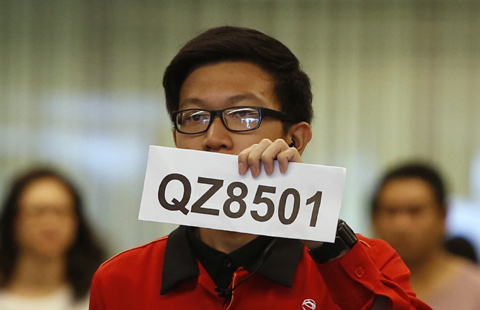Change of deposit calculation rules
Updated: 2014-12-30 08:22
By JIANG XUEQING(China Daily)
|
||||||||
 |
|
An investor examines stock prices at a brokerage in Hangzhou, capital of Zhejiang province. The Shanghai Composite Index climbed to the highest level since January 2010 on Monday. Expectations of loosening liquidity conditions may further boost market sentiment. LONG WEI/FOR CHINA DAILY |
PBOC decision expected to lower financing costs, boost lending
The People's Bank of China, the central bank, will change rules on how it calculates the loan-to-deposit ratios of banks from next year, a move that is expected to make available more funds for lending.
The central bank will expand the base for calculating loan-to-deposit ratios by including savings held by banks for non-deposit-taking financial institutions into bank deposits. Under the current rules, Chinese banks are allowed to lend up to 75 percent of their deposits.
Lian Ping, chief economist at Bank of Communications Co Ltd, said: "By enlarging the scope of deposits, the central bank will defuse the pressure of attracting deposits on banks, especially medium-sized joint-equity commercial banks. It is estimated that the loan-to-deposit ratio may drop by more than 5 percentage points."
Statistics from listed commercial banks showed that the savings of non-bank financial institutions accounted for about 8 percent of the total deposits of the listed banks at the end of June. For Industrial Bank Co Ltd alone, such savings even took up 24.7 percent of its deposits. It is expected that the adjustment of the calculation method may lower the bank's loan-to-deposit ratio by 12 percentage points.
The rule change will ease liquidity conditions and reduce deposit and lending rates for commercial banks. It will also help lower financing costs for domestic companies, Lian said.
The PBOC said banks should set aside additional reserves for the newly included deposits, but the reserve requirement ratio is set at zero for the time being, which means banks do not need to hold additional reserves at present.
According to a research report by Shenyin & Wanguo Securities Co Ltd, the savings held by banks for non-deposit-taking financial institutions had reached 10.3 trillion yuan ($1.65 trillion) as of Sept 30. Additional reserves are needed for 7.8 trillion yuan of the savings. If the reserve requirement ratio were 20 percent, about 1.5 trillion yuan would be set aside as additional reserves.
Wen Bin, principal researcher at China Minsheng Banking Corp Ltd, said: "If the PBOC requires banks to set aside additional reserves worth 1.5 trillion yuan, it would have to cut the RRR by 150 basis points to offset the reserves' impact on liquidity. The central bank decided not to resort to an across-the-board RRR cut due to concerns that the financial market will interpret this move as China's easing of monetary policy."
Li Shanshan, a banking analyst at BOCOM International Holdings Co Ltd, said the PBOC does not want to send a signal indicating that the monetary policy will become too loose.
"The central bank released short-term liquidity in recent months mainly through monetary policy tools. Although it may cut RRR and interest rates next year, the central bank is unlikely to do so within a short time," Li said in a research note.
By easing the rules on loan-to-deposit ratios, the PBOC will improve the credit capacity of commercial banks, but it does not mean that banks will increase lending, analysts and economists said.
The speed of lending depends more on the loosening of credit policies and the demand of the real economy than loan-to-deposit ratios. The major problem now is lack of sufficient credit demand, Li said.

 New Consul General of China in New York arrives at JFK
New Consul General of China in New York arrives at JFK
 Missing AirAsia plane maybe at sea bottom
Missing AirAsia plane maybe at sea bottom
 Chinese artists get Times Square spotlight
Chinese artists get Times Square spotlight
 Yearender: Best selling Chinese films in 2014
Yearender: Best selling Chinese films in 2014
 Top 10 policy changes of China in 2014
Top 10 policy changes of China in 2014
 Families of MH370's passengers still hold out hope
Families of MH370's passengers still hold out hope
 Clearing house sees bright future in Brazil
Clearing house sees bright future in Brazil
 Where did you go flight QZ8501
Where did you go flight QZ8501
Most Viewed
Editor's Picks

|

|

|

|

|

|
Today's Top News
Lost plane's request to change course was denied
The Interview gets mixed views
Harvard students seek meaty profits from alpaca
Funeral set for Officer Wenjian Liu
China offers to help in search for missing AirAsia flight
AirAsia plane has tire problem in Philippines
Missing AirAsia plane could be at 'bottom of sea'
Deals planned to recover illegal assets from abroad
US Weekly

|

|







